
FA ČVUT exhibits models of functionalist villas in the Baba settlement
February 16 – March 13, 2015
The Baba Settlement was designed and built in 1932 on the land Na Babě in Prague 6 as an exhibition of "new ways of building and living," and it remains a unique architectural achievement to this day. It is also the best-preserved collection of its kind in Europe. Unlike similar colonies in Stuttgart, Vienna, and Wrocław, the Baba settlement has been preserved intact and only minimally affected by adaptations from previous eras. The Palička villa, by Mart Stam, the only foreign architect involved in the construction of the settlement, has been reconstructed according to designs by architects Ladislav Lábus and Norbert Schmidt and is praised for its exemplary approach to modern monuments.
The realization of the Baba Settlement was not funded by the state, city, or any other organization, unlike similar projects. It was financed by private developers, which is why the famous villas remain privately owned and thus inaccessible to the public. The exhibition at FA CTU thus offers a unique opportunity to become acquainted with the works of the most prominent representatives of modern functionalist architecture in the then Czechoslovakia, such as Ladislav Žák, Hana Kučerová-Záveská, Oldřich Starý, Josef Gočár, and Pavel Janák. The models capture the "ideal state" of buildings in Baba without modifications and extensions that arose in later years.
The exhibition "Baba Settlement, plans and models 1932," which was created as part of the Prague – European City of Culture 2000 project, was first held in the hall of the then Faculty of Architecture of CTU. The exhibition was based on architectural models of famous interwar villas that students produced as part of their education under the guidance of FA CTU teachers.
“The commencement of work was preceded by an important decision that aimed at the selection of 'building material.' The choice ultimately fell on sandwich panels: both with regard to durability, but at the same time, the smooth white surface of the panels and their precise thickness are particularly suitable for producing models from the era of functionalism. For other styles, especially those characterized primarily by details, this material is not very suitable, while modernist buildings with large, simple surfaces are ideal for it,” explains Prof. Petr Ulrich, who, along with Prof. Tomáš Šenberger and Prof. Vladimír Šlapeta, contributed authorially to the entire project.
The results of research that preceded the preparation of the exhibition between 1995 and 1997 were summarized in an exhibition publication, which, in addition to texts and photographs, included plans for building permits for individual objects, according to which the models were made. The catalog for the exhibition is currently the most thorough documentation of the original villas and confronts the current state with the original ideas and concepts.
After the exhibition disappeared from galleries for several years, thanks to the interest of the Prague 6 municipality, 19 original models have been restored and another 14 have been reproduced. In its renewed form, the exhibition was presented to the public on the occasion of the 80th anniversary of the establishment of Baba Settlement in the autumn of 2012 at the Chodník gallery in the Glass Palace. Last year, individual buildings were supplemented by an urban model of the entire villa colony. This model, along with the Palička villa (Mart Stam) and Pavel Janák's villa, is currently being exhibited in New York, where the Jaroslav Fragner Gallery is presenting the exhibition "Prague Functionalism/ Traditions and Contemporary Echoes" at the Center for Architecture.
The initiative to display models at the Faculty of Architecture came from Swiss architect Pierre von Meiss, who is currently a visiting professor at FA CTU. Under his guidance, first-year students will develop projects for buildings inspired by the villas in Baba in the upcoming semester. The resulting design for the exhibition area will allow the public to become more familiar with the architectural and cultural value of Baba.
“I am glad for this assignment. When I started designing the reconstruction of the villa by Mart Stam, I visited similar colonies with the investor. He suggested that it would be good to create an information center in Baba, as is common in the world, and as František Kavalír built here in 1932. However, the sample wooden cabin that housed the exhibition has not been preserved, and the plans for the new pavilion fell through. The students' projects could thus serve as a new impulse for the revival of this idea,” said Dean of the Faculty of Architecture of CTU Prof. Ladislav Lábus during the exhibition's opening.
The exhibition is freely accessible to the public and will be on display in the main hall of the Faculty of Architecture of CTU in Prague, Thákurova 9, Prague 6 until March 13, 2015.
February 20, 14:00 – lectures by Prof. V. Šlapeta and Prof. L. Lábus
On Monday, February 16, 2015, the opening of the exhibition "Baba Settlement 1932" took place in the main hall of the Faculty of Architecture of the Czech Technical University in Prague. The exhibition, organized by the FA CTU in collaboration with the Prague 6 Municipality, presents 31 models of functionalist villas, period photographs, and architectural plans. The collection of architectural models, which originally emerged at the Faculty of Architecture, returns to the academic ground after 15 years, this time as inspiration for student projects. The opening will be accompanied by lectures by Prof. Vladimír Šlapeta on the history of Baba Settlement and a lecture by the Dean of FA CTU Prof. Ladislav Lábus on the reconstruction of the Palička villa on Friday, February 20, 2015, at 14:00 in the Krejcar lecture hall.The Baba Settlement was designed and built in 1932 on the land Na Babě in Prague 6 as an exhibition of "new ways of building and living," and it remains a unique architectural achievement to this day. It is also the best-preserved collection of its kind in Europe. Unlike similar colonies in Stuttgart, Vienna, and Wrocław, the Baba settlement has been preserved intact and only minimally affected by adaptations from previous eras. The Palička villa, by Mart Stam, the only foreign architect involved in the construction of the settlement, has been reconstructed according to designs by architects Ladislav Lábus and Norbert Schmidt and is praised for its exemplary approach to modern monuments.
The realization of the Baba Settlement was not funded by the state, city, or any other organization, unlike similar projects. It was financed by private developers, which is why the famous villas remain privately owned and thus inaccessible to the public. The exhibition at FA CTU thus offers a unique opportunity to become acquainted with the works of the most prominent representatives of modern functionalist architecture in the then Czechoslovakia, such as Ladislav Žák, Hana Kučerová-Záveská, Oldřich Starý, Josef Gočár, and Pavel Janák. The models capture the "ideal state" of buildings in Baba without modifications and extensions that arose in later years.
The exhibition "Baba Settlement, plans and models 1932," which was created as part of the Prague – European City of Culture 2000 project, was first held in the hall of the then Faculty of Architecture of CTU. The exhibition was based on architectural models of famous interwar villas that students produced as part of their education under the guidance of FA CTU teachers.
“The commencement of work was preceded by an important decision that aimed at the selection of 'building material.' The choice ultimately fell on sandwich panels: both with regard to durability, but at the same time, the smooth white surface of the panels and their precise thickness are particularly suitable for producing models from the era of functionalism. For other styles, especially those characterized primarily by details, this material is not very suitable, while modernist buildings with large, simple surfaces are ideal for it,” explains Prof. Petr Ulrich, who, along with Prof. Tomáš Šenberger and Prof. Vladimír Šlapeta, contributed authorially to the entire project.
The results of research that preceded the preparation of the exhibition between 1995 and 1997 were summarized in an exhibition publication, which, in addition to texts and photographs, included plans for building permits for individual objects, according to which the models were made. The catalog for the exhibition is currently the most thorough documentation of the original villas and confronts the current state with the original ideas and concepts.
After the exhibition disappeared from galleries for several years, thanks to the interest of the Prague 6 municipality, 19 original models have been restored and another 14 have been reproduced. In its renewed form, the exhibition was presented to the public on the occasion of the 80th anniversary of the establishment of Baba Settlement in the autumn of 2012 at the Chodník gallery in the Glass Palace. Last year, individual buildings were supplemented by an urban model of the entire villa colony. This model, along with the Palička villa (Mart Stam) and Pavel Janák's villa, is currently being exhibited in New York, where the Jaroslav Fragner Gallery is presenting the exhibition "Prague Functionalism/ Traditions and Contemporary Echoes" at the Center for Architecture.
The initiative to display models at the Faculty of Architecture came from Swiss architect Pierre von Meiss, who is currently a visiting professor at FA CTU. Under his guidance, first-year students will develop projects for buildings inspired by the villas in Baba in the upcoming semester. The resulting design for the exhibition area will allow the public to become more familiar with the architectural and cultural value of Baba.
“I am glad for this assignment. When I started designing the reconstruction of the villa by Mart Stam, I visited similar colonies with the investor. He suggested that it would be good to create an information center in Baba, as is common in the world, and as František Kavalír built here in 1932. However, the sample wooden cabin that housed the exhibition has not been preserved, and the plans for the new pavilion fell through. The students' projects could thus serve as a new impulse for the revival of this idea,” said Dean of the Faculty of Architecture of CTU Prof. Ladislav Lábus during the exhibition's opening.
The exhibition is freely accessible to the public and will be on display in the main hall of the Faculty of Architecture of CTU in Prague, Thákurova 9, Prague 6 until March 13, 2015.
The English translation is powered by AI tool. Switch to Czech to view the original text source.
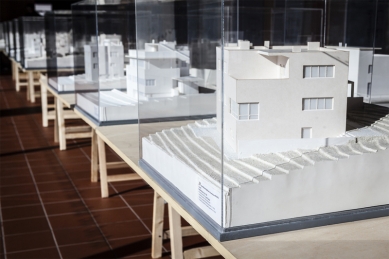
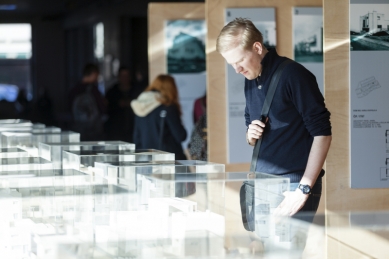
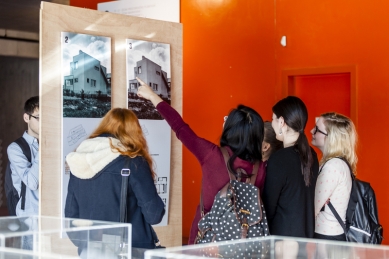
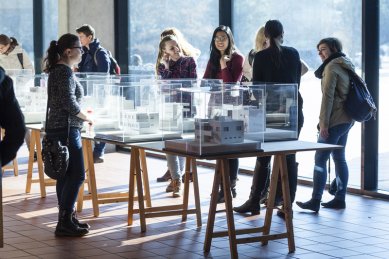
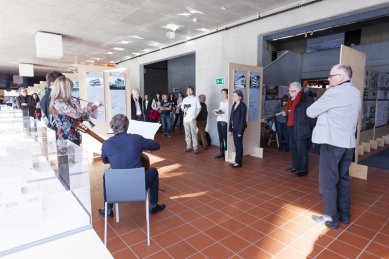
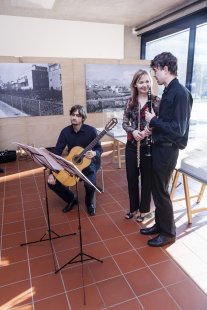

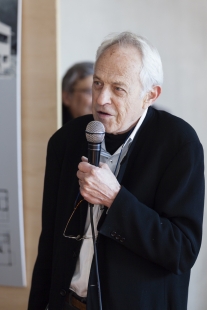

0 comments
add comment










